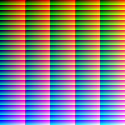Introduction:
Graphic icons. They are everywhere. There are dozens of them on every electronic device. We use them to express purpose, type of service, action, emotions, identity, purpose and personal style. Graphic icons have become an indispensable part of the modern digital age, where they are found on all kinds of electronic devices, from smartphones to personal computers. Their presence and use are not only aesthetic, but also have a deeper meaning. In this article, we will explore the history of graphic icons, their purpose, and the role they play in our daily lives.
History:
Of course, iconography did not begin with the use of computers, although many associate them with this. The first steps in the use of graphic symbols date back to the era before the computer age. Different cultures have used symbols and icons to communicate, whether in the form of hieroglyphs, symbols or pictograms. With the development of computing and the use of graphical interfaces, there was a need for clear and recognizable symbols to facilitate the user experience.
An important milestone in the history of graphics icons was the introduction of icons in the Xerox Star operating system in the early 1980s. This system introduced the concept of icons to represent files, folders, and other functions that we take for granted today. They were followed by other platforms such as Macintosh and Windows, which contributed to the standardization and development of graphic icon design.
Purpose:
The main purpose of graphic icons is to facilitate and speed up the user experience. Instead of long textual descriptions, they enable immediate recognition of functions and actions. For example, the trash can icon has become the delete symbol, and the gear represents options and settings. These intuitive symbols make it easier to navigate and use electronic devices, especially on touch screens where every pixel is precious. At the same time, like many graphic fonts, icons are universal. The mentioned trash can icon can be understood equally by every user, regardless of what language they speak or write.
Application in modern life:
Graphical icons are present on all electronic devices today, from smartphones to car dashboards. Their role has also extended to social networks, websites and applications, where they represent key elements of brand design and recognition. We also express our feelings with icons, these types of icons are called emoi and sometimes they partially replace text content and are just as universal regardless of language and culture.
In addition to their functional role, graphic icons also have an artistic value. Designers strive to create aesthetically appealing symbols that combine recognition with modern design. Also, icons adapt to culture and trends, which emphasizes their dynamism and adaptability. Certain icons thus became true logos and also define brands.
Conclusion:
Graphical icons have become a key element of modern digital culture, facilitating the user experience and enabling quick identification of functions on electronic devices. Their history ranges from simple symbols to complex works of art that reflect our technological age. With constant development and adaptation, graphic icons will continue to play an important role in our daily lives.
Tomaž Berčič





